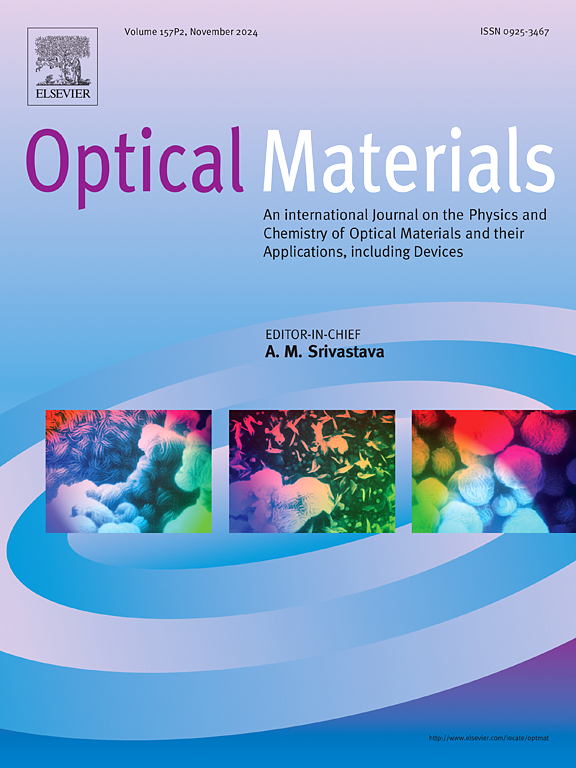Visible light photoresistance and response time of samarium doped zinc oxide thin films grown by pulsed laser deposition
IF 4.2
3区 材料科学
Q2 MATERIALS SCIENCE, MULTIDISCIPLINARY
引用次数: 0
Abstract
Samarium doped zinc oxide (Sm:ZnO) thin films were fabricated on c-oriented sapphire substrates by pulsed-laser deposition with Sm dopant from 0 to 10 at.%. X-ray diffraction patterns, X-ray fluorescence mapping, and X-ray absorption near-edge structure spectra indicated uniform incorporation of Sm into ZnO lattice without secondary phase. With increasing Sm concentration, zinc vacancy or oxygen interstitial is formed to maintain electrical neutrality, which are identified by photoluminescence spectroscopy. The increasing defect concentration and decreasing exciton binding energy enhanced the photoresistance response in visible regime, where the absolute value of normalized resistance response was between 2 % and 8.79 % by 1 mW blue laser (wavelength of 450 nm) illumination for Sm:ZnO thin films. Time-dependent photoresistance measurements revealed two response times. The shorter response time, around 1.2–26.7 s, is contributed by the free electron-hole pair generation/recombination and the response of carriers trapped in deep level defects. The longer response time, around 76–858 s, is contributed by the captured oxygen on the thin film surface. Overall, the 5 at.% Sm:ZnO thin film is the best for photodetection applications due to its high photoresistance response and short response time.

脉冲激光沉积法制备掺钐氧化锌薄膜的可见光电阻和响应时间
采用脉冲激光沉积的方法,在c取向蓝宝石衬底上制备了钐掺杂氧化锌(Sm:ZnO)薄膜。x射线衍射图、x射线荧光作图和x射线吸收近边结构光谱显示Sm均匀地掺入ZnO晶格中,没有二次相。随着Sm浓度的增加,形成锌空位或氧间隙以保持电中性,这是由光致发光光谱识别的。缺陷浓度的增加和激子束缚能的降低增强了Sm:ZnO薄膜在可见光区的光阻响应,在1 mW蓝光(波长为450 nm)照射下,Sm:ZnO薄膜的归一化电阻响应绝对值在2% ~ 8.79%之间。随时间变化的光阻测量揭示了两个响应时间。响应时间较短,约为1.2-26.7 s,这主要是由于自由电子-空穴对的产生/重组和深能级缺陷中载流子的响应。较长的响应时间约为76-858秒,这是由薄膜表面捕获的氧气贡献的。总的来说,这5个国家。Sm:ZnO薄膜具有较高的光阻响应和较短的响应时间,是光探测应用的最佳选择。
本文章由计算机程序翻译,如有差异,请以英文原文为准。
求助全文
约1分钟内获得全文
求助全文
来源期刊

Optical Materials
工程技术-材料科学:综合
CiteScore
6.60
自引率
12.80%
发文量
1265
审稿时长
38 days
期刊介绍:
Optical Materials has an open access mirror journal Optical Materials: X, sharing the same aims and scope, editorial team, submission system and rigorous peer review.
The purpose of Optical Materials is to provide a means of communication and technology transfer between researchers who are interested in materials for potential device applications. The journal publishes original papers and review articles on the design, synthesis, characterisation and applications of optical materials.
OPTICAL MATERIALS focuses on:
• Optical Properties of Material Systems;
• The Materials Aspects of Optical Phenomena;
• The Materials Aspects of Devices and Applications.
Authors can submit separate research elements describing their data to Data in Brief and methods to Methods X.
 求助内容:
求助内容: 应助结果提醒方式:
应助结果提醒方式:


